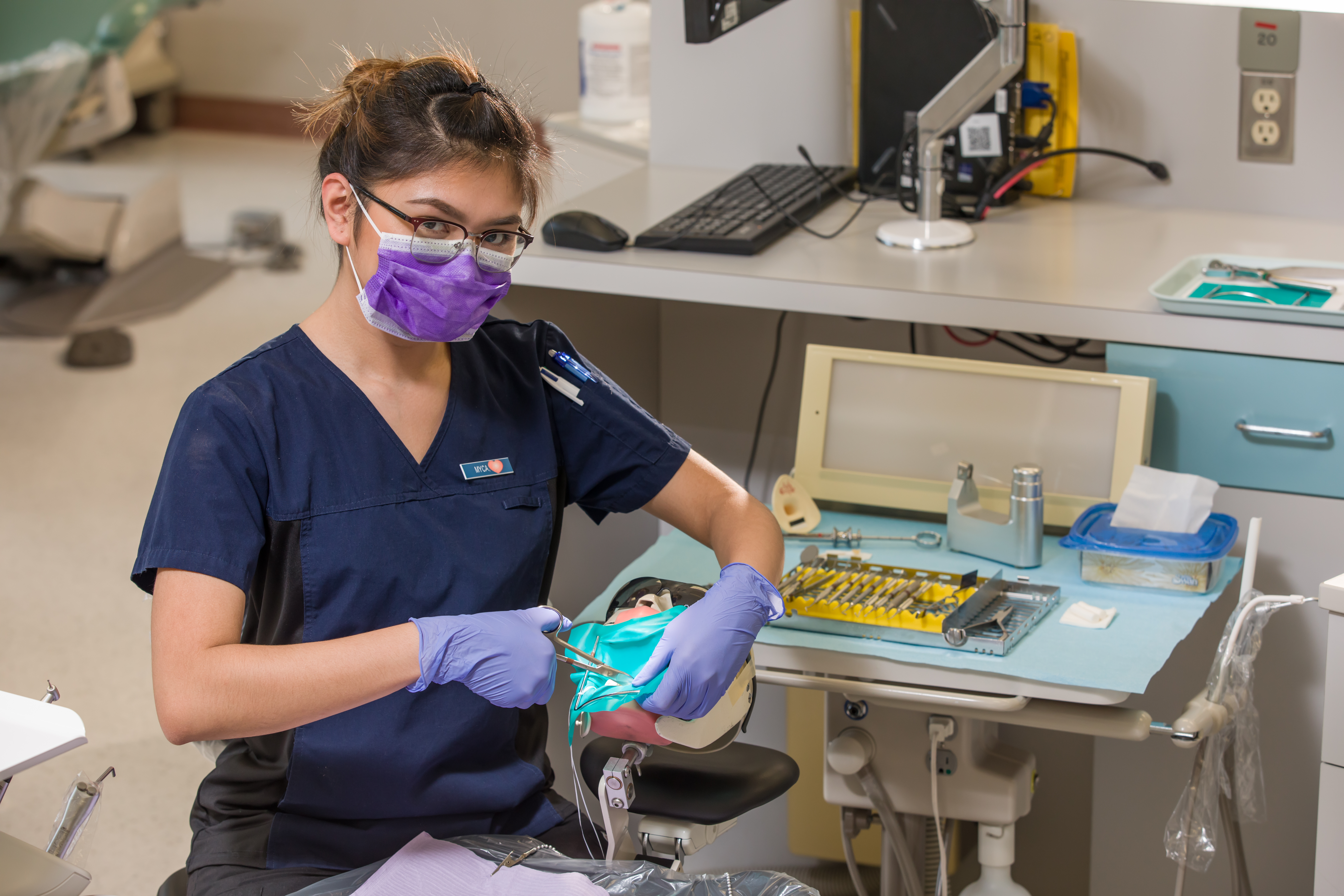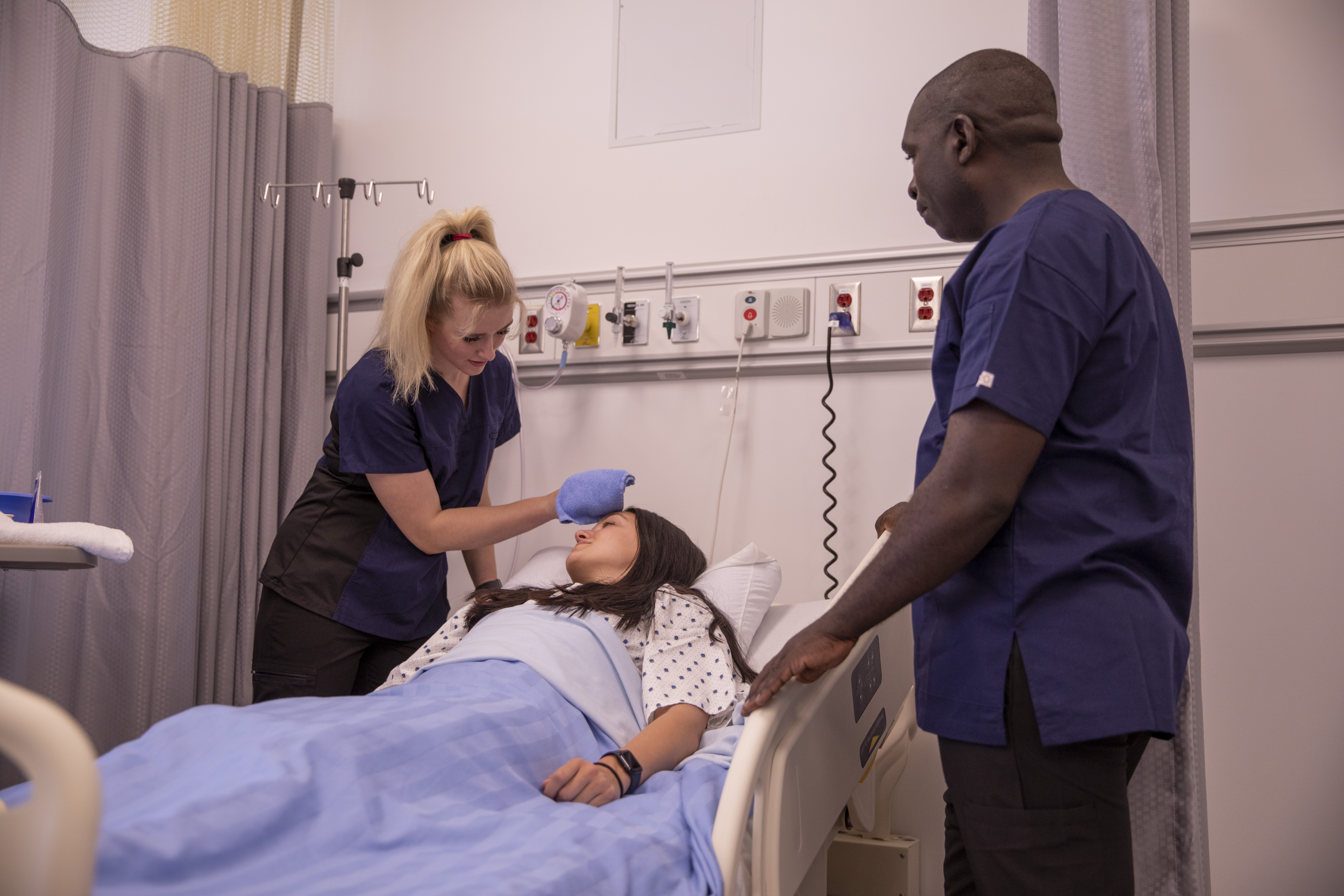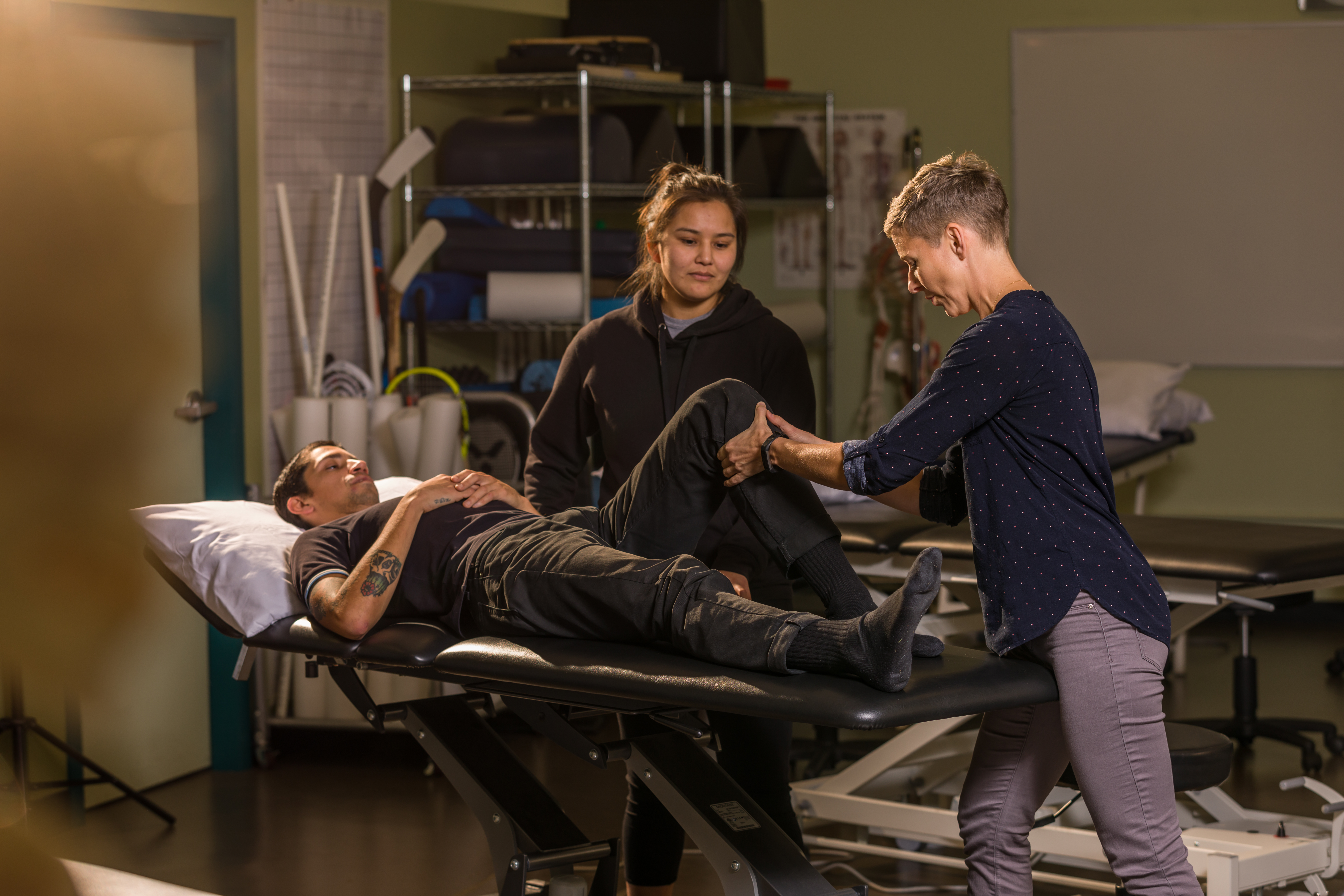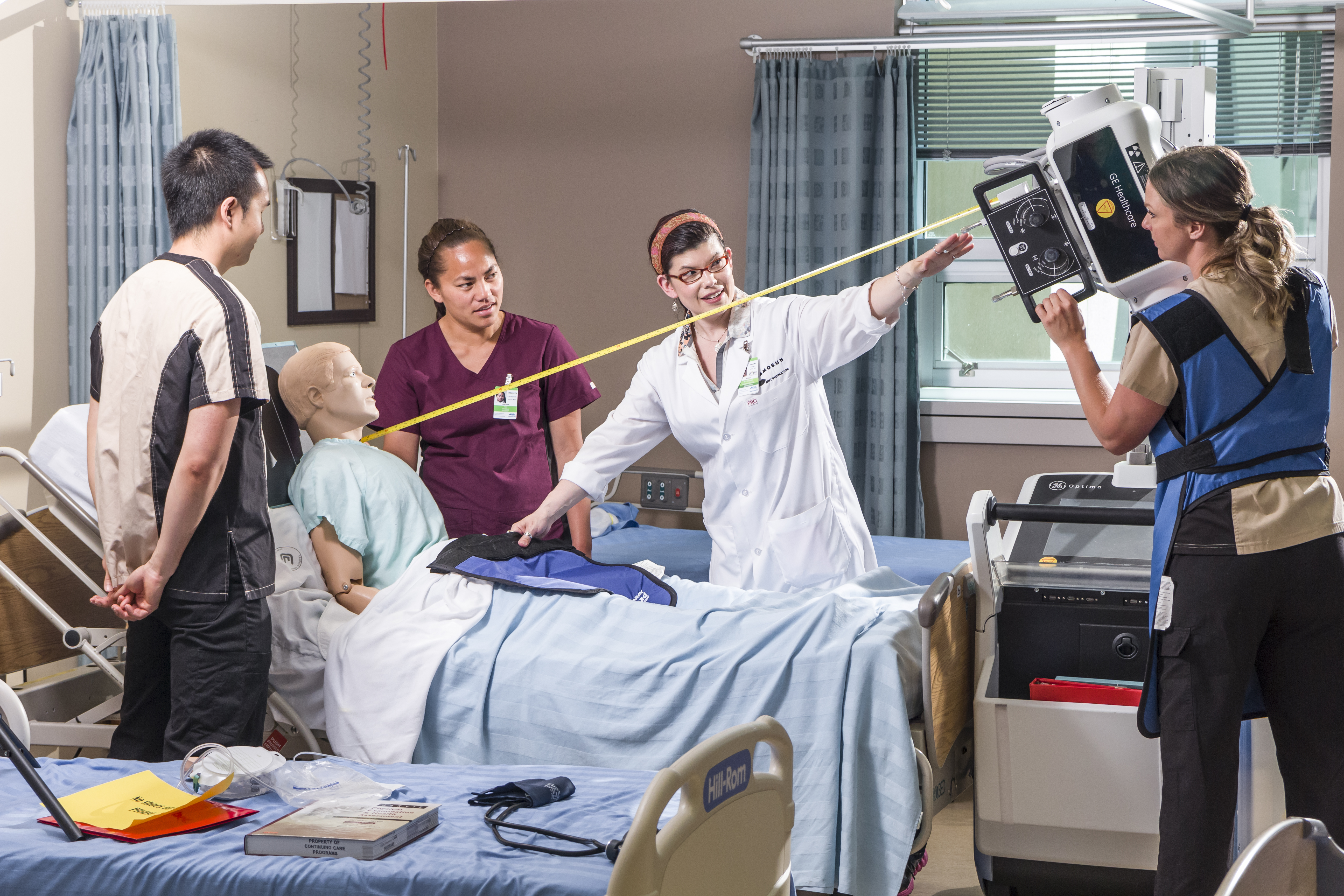Welcome Back!



The theme for this year's HHS Student Interdisciplinary Festival is "Get the Scoop on our Scope - What
We Wish Our Colleagues Knew"
developed by the first Diagnostic Medical Sonography Program Students.
The festival is held for students by students to help them to learn from, with, and about each other to
improve collaboration and the quality of care.
This year, students in the Sonography program interviewed and exchanged information with students from other Health, Health Sciences and Human Service Programs to explore what “Get the Scoop On Our Scope” meant to them. They came up with a series of questions that they asked of many different program students to better help others understand, “what they wished we knew” about their professions and Scope of Practice before we interacted with them in the professional environment.
Want to learn more about programs your profession routinely interacts with?
Then, click their program below!












Our clients can vary based on whether we are working as a field athletic therapist or as a clinical athletic therapist. Field athletic therapy is primarily based around working with a sports team or athletic organization. These clients are usually receptive to instructions as the guidance we give pertains to them returning to their sport as quickly as possible. In a clinic, we deal with clients from the general population. Vary in age, and athletic ability. Most are receptive to our guidance, but sometimes struggle to keep up with home exercise plans they’re prescribed.

Most of the information we gather from patient history is information about their injury. This includes the mechanism of injury, previous injuries near the area, pain OPQRST questions (Onset, provocation, quality, radiation, severity, time), and whether or not they feel any neurological symptoms (numbness, tingling sensations). This information helps us determine 3 different indices of suspicion, which are either ruled in or ruled out through the remainder of the assessment.
3. Have you heard feedback from a friend/family or patient that has affected your perception on your future career field? How can relating feelings of empathy/sympathy help improve patient outcomes and create inspiring stories?
No single instance has stuck out to me. However, the relationships I have built with clients over this past semester have made me realize that I love working in this field. Many of my patients have been victims of car accidents. These incidents can derail a person’s life and putting myself in their shoes makes me feel driven to return them to health as quickly as possible.
At the moment, I mostly work with elderly patients who require long-term care. I often work with patients who suffer from major neurocognitive disorders such as dementia, depression, and anxiety. Being in my second year, I also work with patients who require care post surgical procedures or those who have been on a rehabilitation program. The youngest patient I've worked with so far was 69 years of age. Specifically in long-term care, it's quite the process getting patients to carry out specific tasks and acts of daily living. This requires lots of patience and repeating myself. I do my best to communicate more effectively by finding multiple ways to explain tasks in which I can then gauge how each patient reacts and have learned that different approaches work for different individuals. This happens relatively frequently but all of my patients so far have been nice and open to receiving care.

We acquire a lot of information before attending to patients and it usually takes about 30 minutes to read over their charts. We look at most recent scheduled surgeries and why a patient has been admitted to the hospital. We look at their medical orders for scope of treatment (MOST) status, lab work, allergies, most recent vitals such as blood pressure and heart rate, diet/nutrition requirements, their care plan, and medications administered. Additionally, once in the room, we confirm their first and last name as well as date of birth before providing care.
3. Have you heard feedback from a friend/family or patient that has affected your perception on your future career field? How can relating feelings of empathy/sympathy help improve patient outcomes and create inspiring stories?
Especially from friends, family, and co-workers, I recieve very positive feedback about the profession and a great amount of respect. People are always thankful to hear that I am pursuing nursing as it's in such high demand. Patients have also expressed how grateful they are for the care I give which provides a great sense of purpose. It is definitely tough knowing that nursing is well understaffed and patients are affected by not getting the proper care they need, which is a driving factor to pursue this career. Possessing both sympathy and empathy for patients is required when working in healthcare as it can shape their overall experience. Since patients feel very vulnerable when they're in the hospital and might be frightened, it's so important to understand these feelings and make them as comfortable as possible.
We deal with all types of people in the general public. All ages, ablilities, races, education levels, medical issues, mobility issues, etc. Clients are generally good at following instructions, but we do face barriers such as cultural differences, language barriers, cognitive delays/disabilities, caregivers, addictions. There are many ways to increase communication such as technology (google translate), verbal interviews, printed instructions, follow-up with care-givers, open-ended questions/discussions, caring attitude, acceptance, build rapport and trust.

Complete medical and dental history is collected prior to the visit. The Health History is reviewed by the CDA and any "yes" responses are followed-up with clarifying questions. We are looking for any medical/dental conditions that would affect how to best treat that patient in regards to comfort and safety. Example: allergies, transmissible diseases or dental anxiety. It would affect our treatment plan and require modifcations to treatment.
3. Have you heard feedback from a friend/family or patient that has affected your perception on your future career field? How can relating feelings of empathy/sympathy help improve patient outcomes and create inspiring stories?
It's the "Thank-you" from the client at the end of the appointment where they explain how grateful they are to be in your care. Perhaps you changed their opinion of how dental treatment should be, helped them overcome a fear, or simply were their support. That makes it worth all the effort at the end of the day.
In the CMLA profession we most commonly encounter elderly patients. Elderly patients can often present with communication barriers due to hearing and sight impairments. Also, it can prove to be more difficult when dealing with mental impairments in the elderly. More specifically, dementia and Alzheimer’s disease is very common, which presents with confusion and overstimulation. In the healthcare industry it is our duty to provide each patient with dignity and respect, to do so there are slight modifications we must make in our normal patient routine.

We often ask if our patient is on anticoagulants, because if so, this will increase their coagulation time. Which alters test results and will determine our patient aftercare. Another question we often ask is if our patients have been fasting properly. And if so, for how long, because this directly affects the normal range to indicate erroneous results.Other questions involving sample quality is drug monitoring, in which we would ask about their dosage and frequency to determine their peak and trough levels.
3.Have you heard feedback from a friend/family or patient that has affected your perception on your future career field? How can relating feelings of empathy/sympathy help improve patient outcomes and create inspiring stories?
I have heard little to no good feedback about phlebotomy, simply because not many people feel comfortable getting their blood taken. This means even with the best patient care people can still leave with a bad experience. However, there are things we can do to help!
I mostly interact with senior clients, people with house insecurity, and some people with disabilities that are in need of food or other services like help with taxes and ID clinics. It is sometimes difficult to interact with seniors because they need more patience when I am explaining things to them. On the other hand, sometimes we have clients that seem to be under the influence of some substance and it can be difficult to communicate with them and you do not know how they could react, but patience is the key factor here

Usually when I have a new client at my practicum site, I need to gather information about their personal information such as date of birth, what kind of housing situation they are in, if they receive any benefits from the government, if they have any kinds of disability, and how many people are living in the same household in order to provide at least enough food for the family
3. Have you heard feedback from a friend/family or patient that has affected your perception on your future career field? How can relating feelings of empathy/sympathy help improve patient outcomes and create inspiring stories?
This is interesting for me because I have heard my family's thoughts about this choice of field but I think it is something that I like and that is important. I have also received feedback from my mentor at my practicum, and I was happy with what he told me, that even though I did not have previous experience related to the area, he could see how much I am improving and learning. Relating feelings of sympathy and empathy are very helpful when working in the human services field. You give empathic responses to the situation to acknowledge what the other person is feeling, and try to find a solution
In the Camosun clinic, we treat clients from all age and cultural demographics. It is a clinic that is open to the public, and most of our clients come to Camosun for affordable dental hygiene care. Personally, I have only worked with young adults and seniors, but treating children is a requirement for senior year. Managing children involves using more friendly terminology and mainly focuses on desensitizing them to the dental environment. Compliance with oral self-care directives is always a difficult thing to obtain with clients and dental hygiene care, but we create client centered goals to enhance client autonomy and their self-motivation to make changes when they are ready. We also follow up with clients for multiple care intervals to assess the progress of previous goals, and adjust goals to make them more achievable.

We have clients fill out a health history form and do extensive inquiry with them every appointment prior to doing any type of assessments or treatments. When doing a health history assessment, we are looking for immediate contraindications to care. Uncontrolled blood pressure 160/100mmHg or greater requires medical clearance prior to any invasive assessments or treatments. Blood pressure 180/110mmHg requires immediate referral to the emergency room. We also confirm INR rates are below 3.5 because invasive dental procedures can involve gingival bleeding, so INR rates 3.5 or greater also require medical clearance prior to the appointment. Uncontrolled A1C levels increase risk of infection, so that also requires medical clearance prior to appointments.
3. Have you heard feedback from a friend/family or patient that has affected your perception on your future career field? How can relating feelings of empathy/sympathy help improve patient outcomes and create inspiring stories?
Some feedback that I have heard from clients is that they love coming to Camosun to receive care. I think this is because the clients feel heard and are very involved in the improvement of their health. I have dealt with clients that come from difficult childhoods and lack trust in clinicians, so they have been an inspiration to me becoming a care provider that people can trust and confide in.
In the EACS program we interact with clients and people of any age. I have not started practicum yet; however, I have heard that some clients may be unwilling or unable to follow instructions since we deal with clients of all ages with any sort of background. Communication with clients’ needs to be a respectful and professional interaction and communication would be based on what their needs are and where they’re at, even if they are unwilling to take steps forward in their journey.

It is mostly based on the needs and preferences of the client, which can greatly range between clients. We look for what is needed for the client to best support them in their own individuality and learning plan. Their needs can be very individual with different complexities.
3. Have you heard feedback from a friend/family or patient that has affected your perception on your future career field? How can relating feelings of empathy/sympathy help improve patient outcomes and create inspiring stories?
In this program, we go out and conduct interviews in the workforce. This was a very positive experience which gave the class an exciting look on the profession. I have some family members who have needed individualized care and learning paths created for them by a member of the community and seeing that positive effect on my own family members in their growth, I knew this is what I wanted to do. Relating feelings of empathy to my clients fosters a healthy professional client caregiver relationship. This feels inclusive and better meets their needs because there is a safety net established.
I work with the elderly, people with dementia and people with physical disabilities. It’s really common for them to have trouble following directions especially those with dementia. I always make sure to introduce myself and explain what I will be doing before I start. I use simple sentences and language that they would understand (no slang or medical terms) and I speak slowly and clearly. I always make sure to work slowly and at their pace.

I always verify their name and get permission to be in the room with them. I usually ask questions about their life or how their day is going as I do my work. I find it helps relax them and makes me less intimidating because my job requires me to be in their personal space.
3. Have you heard feedback from a friend/family or patient that has affected your perception on your future career field? How can relating feelings of empathy/sympathy help improve patient outcomes and create inspiring stories?
From clients - they recognize that my role is key in the nursing field. I’m usually the one who notices and hears things from the client that I then pass on to the nurses/other team members. My career path lets me be hands on with the clients day to day activities and I become a friend to them. I’ve also heard so many stories of burnout within my career.
I haven't had many clients that are unable or unwilling to move through assessment/reassessment with me. I have a few that I ask to meet me halfway. For example, I have a regular client that often finds our assessment process is taxing on them emotionally/mentally so I do a check in with them every treatment: How are you feeling today? Are you ok if we do some more testing and assessment in todays treatment? Often they are very good about letting me know if they have the headspace or not that day. To add: Some assessment may be a pain response for clients and they may be unwilling to move into some ranges of motion. If they can't do it through the initial assessment, often I will check in and ask if I can try again when they are on the table. (Easier for them to relax and let me do the movement for them).

We use CCLORDFICARAH: Chief Complaint: What is bringing you in today? Location: Point to where it hurt Onset: How long has this been happening? Sometimes the mechanism of injury comes out here. Referral: Does the discomfort travel? (Up or down arm) Duration: How long does it hurt for? Are there times where it is worse or better? Frequency/Intensity/Character: How often do they feel this discomfort? Can you rate it on a scale of 1-10? What sensation do you feel there? (achy, sharp, shooting) without adding my own words. Aggravating factors (what makes it worse?) Relieving factors (what makes it better?) Alternate healthcare: Who else are you seeing for this? (Doctor, physiotherapist, etc) We also factor in: Sleep and Stress: Is the client sleeping ok? How are the stress levels? As these can occasionally exacerbate symptoms for clients. Numbness, weakness, or tingling: Rule out nerve related injuries. Medications: Checking in to see if they are having any side effects from medications or if I need to structure my treatment around anything. Headaches: Depending on client. Not everyone is affected by headaches but if they are I like to know frequency/medication/what kind of headache.
3. Have you heard feedback from a friend/family or patient that has affected your perception on your future career field? How can relating feelings of empathy/sympathy help improve patient outcomes and create inspiring stories?
With Massage Therapy, my biggest professional barrier has been how I can highlight the importance of what we do. Often, people are very surprised by how much we need to know for this profession. Client education is the biggest way I combat this. We also hold space for clients with empathy and sympathy often. It is out of our scope to provide any feedback on what they may be discussing, but it is not out of our scope to hold space for them if they feel safe expressing themselves. It can help with developing our therapeutic relationship with clients, and we may have external resources to direct them to if they feel that is helpful.
We interact with all sorts of patients. Some come in on their feet with minor pain and can follow all instructions, others are in significant pain, or have trouble hearing, or are unsteady on their feet.. There's a lot of different ways we have to adapt to people. I find acting out with my body what I need my patient to do is a really helpful supplement to verbal instructions. If my patient is young, or maybe confused, keeping instructions really brief and clear also helps a lot. Honestly, that's kind of a good idea with anyone though, haha.

The main things are confirming identity and what needs to be imaged. Sometimes doctors order the wrong stuff, or there's a mistake when the requisition is made (a lesson I learned the hard way). Other than that, I like to know how much pain my patient is in so I know how much I can palpate. If someone comes in on a stretcher, it's important to figure out whether or not they can stand. That kind of stuff.
3. Have you heard feedback from a friend/family or patient that has affected your perception on your future career field? How can relating feelings of empathy/sympathy help improve patient outcomes and create inspiring stories?
People are usually very appreciative, and that feels good. I think it's really important to try to put yourself in your patients shoes in order to give good care. If you don't try to understand how other people are feeling, I think you'll find yourself frustrated with them or with your work when you don't need to be. That being said, it's also important not to go overboard with empathy. You're going to see a lot of people that are in great pain, or are just really down on their luck, and taking on too much of their pain to try to understand their perspective can be dangerous to your own mental health. So try to find the right distance to keep people at, if that makes any sense haha.
As PN students, our demographics are elderly residents living in a long term care facility, out in community for mental heatlth so it could be any age or group experiencing mental health issues, challenges, and the adult in acute care, again varying in demographics. Patients typically are only assigned to a PN student if they are able to follow directions and are deemed appropriate for working with students. There may be challenges of course. If a student is having a challenge, they are to present this to the instructor or team in which the patient actually works with (nursing staff at the facility). We then create a care plan focused on safety, such as having at least two care providers present. This is to be discussed with the professors and staff at facility as a student is not to make these decisions. Modifications can be used in communication such as one direction at a time. Again, this is to meet the patient where they are, and it should be assessed for every patient.

We have to know patient demographics before we start an assessment. For example, identifying that we have the correct patient. We independently check the name on the wrist band, as well as asking the patient their name and how to be addressed. In clinical practice, we would read the chart to help guide what are expected findings for this patient and what would be abnormal findings for this patient. If the outcomes are abnormal, the PN is responsible to know when to seek more guidance and stop the procedure, such as in an emergency. We are trying to establish a baseline for our patients and if any findings are abnormal we are to report them to the doctor.
3. Have you heard feedback from a friend/family or patient that has affected your perception on your future career field? How can relating feelings of empathy/sympathy help improve patient outcomes and create inspiring stories?
Individuals will give feedback - whether it's that you are seemingly perfect for this role due to attitude, or you're smart enough, or some may say they never pictured you in this role. It is their opinion, and whether you take that or not is up to you. One can also choose how to react to feedback, which may trigger self-reflection. Self-reflection on yourself and if you still watnt to pursue this career, if you curerntly think your persoanltiy is right for the role, waht do you need to do to improve? Bad experiences may fuel someone with negativity, but they offer the positive aspect of room for improvement. It's not the critique, but how you receive the critique and choose to apply it.
As sonographers, we work with patients of essentially any age, from premature babies and children to adults and the elderly. Working with each different patient demographic presents its own unique challenges, and the way we may communicate and deal with one patient care related obstacle may be very different than another. When working with young children or babies, distraction is often one of our best tools. Making sure the child is occupied and focused on something else while we are trying to scan can help us complete the exam in an efficient manner, without stressing the child too much. With older children, they often are very interested in the exam and what to know what it is that we are doing, so explaining everything and reassuring them with every step is key. With adults, making the value of the exam clear is very important. Patients are often more compliant if we are able to show them how important the exam is to their health, or how this small amount of discomfort will benefit them in the long run.

Prior to bringing in the patient for their ultrasound exam, we review their requisition which includes the reason for why the patient is coming in, as well as go over previous imaging to give us an idea of what we're looking for. Although we have access to the patient's requisition stating the reason for their exam, we still want to ask the patient questions relevant to their clinical history. We do this to ensure we're gathering as much information as possible to help guide us for the rest of the exam. The most important questions we tend to ask patients are whether they've had any previous surgeries and what their symptoms are. These are the key pieces of information we're looking for prior to imaging. These questions are routinely asked for everyone, as well as if and when they are experiencing pain, how long they have been symptomatic, where their area of concern is, but other questions a sonographer may ask can vary depending on why they're there. For example, if a patient comes in for a pelvic exam, the sonographer would ask the date of their last menstrual period since findings can be normal or abnormal based on what part of their cycle they are in. The sonographer would also ask about previous surgeries as the patient may have had their ovaries removed. This saves the sonographer wasting time looking for things that aren't there. In an abdominal ultrasound, you would want to make sure the patient has fasted because this will change the expected appearance of the gallbladder. Obtaining a thorough patient history ensures that us as sonographers are answering the clinical question before sending the images to the doctor so the patient can receive an accurate diagnosis and the best care possible. .
3. Have you heard feedback from a friend/family or patient that has affected your perception on your future career field? How can relating feelings of empathy/sympathy help improve patient outcomes and create inspiring stories?
One of the student's parents both work in the medial imaging field. Having family members that work in healthcare gives a direct insight into the day to day responsibilities of a health care professional, including the less glamrous aspects of patient care. Listening to their stories help bring forward the reality of working in healthcare, and how vulnerable patients can be when they need care the most. A specific gratification can be derived from providing empathy and care to those who need it most, or may not have had the best experience in a medical setting. Negative expereinces help inform us to do better with patient care, and can strengthen our skills in moving forward. This helps avoid future negative experiences for both the patient and healthcare professional all while giving quality care. There is no greater joy than taking what could have been a negative experience and transforming it into a positive and memorable outcome. Healthcare can be extremely rewarding, and it is the patients and clients' outcome that make it so.